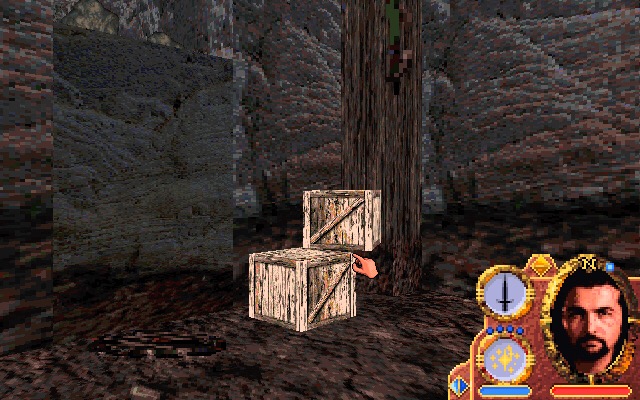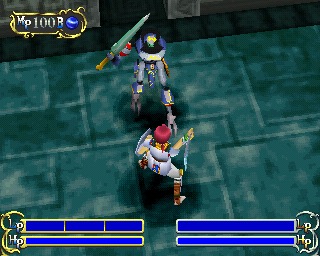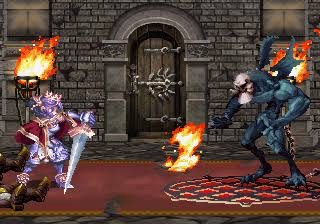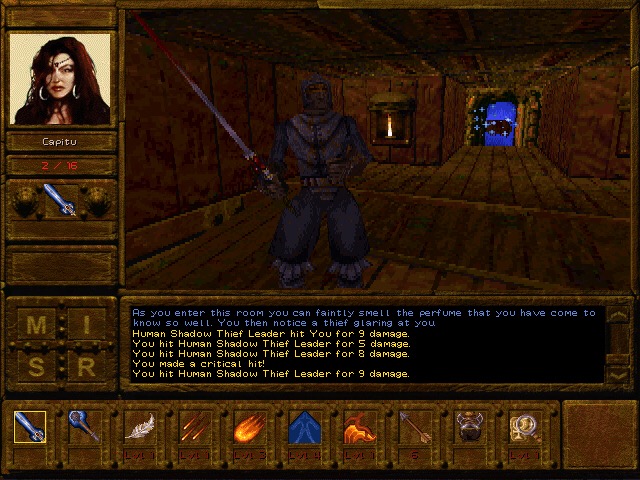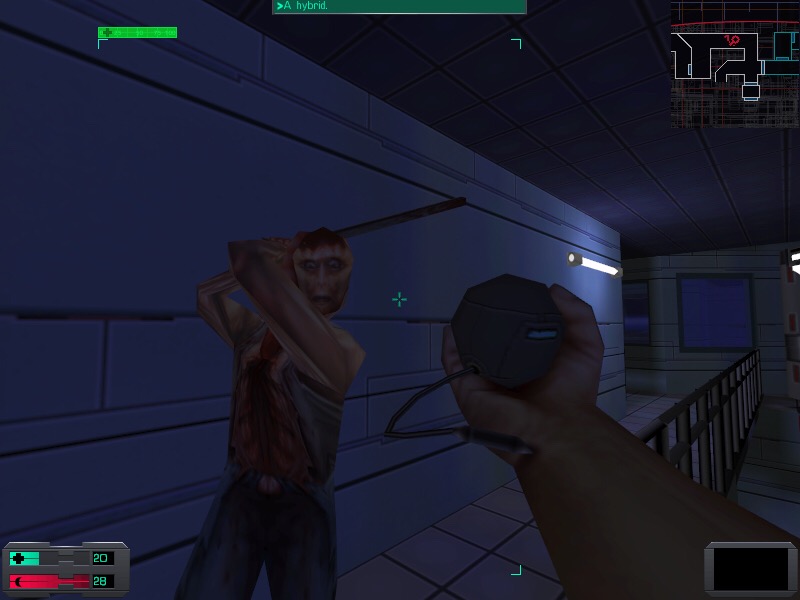 Hello, gentle readers, and welcome to the RPG Reload, the regular feature where the real monster was us all along. This week, we’re heading into the next chapter of our RPG Reload Glossary covering the history of action-RPGs. The genre remains somewhat difficult to nail down to this day, but the 1990s would prove to whittle down the general perception of the genre to two or three basic forms. Like with any other genre, this more solid form came about due to some very popular tentpole releases that set a template for others to follow. In the last installment, we saw how the more Japan-focused console side of the industry settled in on two basic templates for the genre. This time around, we’re covering the second half of the 1990s, where the Western-focused PC market finally found its genre-maker.
Hello, gentle readers, and welcome to the RPG Reload, the regular feature where the real monster was us all along. This week, we’re heading into the next chapter of our RPG Reload Glossary covering the history of action-RPGs. The genre remains somewhat difficult to nail down to this day, but the 1990s would prove to whittle down the general perception of the genre to two or three basic forms. Like with any other genre, this more solid form came about due to some very popular tentpole releases that set a template for others to follow. In the last installment, we saw how the more Japan-focused console side of the industry settled in on two basic templates for the genre. This time around, we’re covering the second half of the 1990s, where the Western-focused PC market finally found its genre-maker.

Thanks to games like Ys, The Legend of Zelda, Xanadu, and Secret of Mana, console action-RPGs were now basically one of two forms. There were top-down action-RPGs that infused experience and leveling systems into Zelda-style adventures, and there were side-scrolling action games with heavy RPG elements that largely followed the beat set down by Falcom’s Dragon Slayer games. By the end of the decade, one of these two styles would be more or less spun off into a new genre label, one that would eventually become almost as loose in its definition as the term ‘action-RPG’. For the time being, however, most players simply appended ‘top-down’ or ‘side-scrolling’ to the term to keep them sorted out.
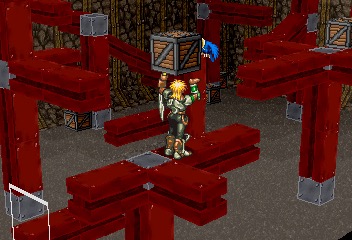 By 1996, the 32-bit consoles were starting to find their footing. The Saturn had an especially interesting line-up of action-RPGs. Beyond Oasis got a follow-up titled The Legend of Oasis, while Landstalker saw a spiritual successor in the form of Dark Savior. Popular action game developers Treasure put together a fantastic RPG beat-em-up called Guardian Heroes, while Crystal Dynamics and Silicon Knights released the first installment in the popular Legacy of Kain series. That game also released on PlayStation and PC. The Super NES was still hanging in there, too. The original Tales of Phantasia team decided to split off and created a game that had somewhat similar mechanics, Star Ocean. Naturally, this version of the game never left Japan. Americans could console themselves with Super Mario RPG, which had some action elements like platforming and timing-based attacks while still remaining largely within JRPG lines.
By 1996, the 32-bit consoles were starting to find their footing. The Saturn had an especially interesting line-up of action-RPGs. Beyond Oasis got a follow-up titled The Legend of Oasis, while Landstalker saw a spiritual successor in the form of Dark Savior. Popular action game developers Treasure put together a fantastic RPG beat-em-up called Guardian Heroes, while Crystal Dynamics and Silicon Knights released the first installment in the popular Legacy of Kain series. That game also released on PlayStation and PC. The Super NES was still hanging in there, too. The original Tales of Phantasia team decided to split off and created a game that had somewhat similar mechanics, Star Ocean. Naturally, this version of the game never left Japan. Americans could console themselves with Super Mario RPG, which had some action elements like platforming and timing-based attacks while still remaining largely within JRPG lines.
The latest game in the Elder Scrolls series also hit in 1996. The Elder Scrolls: Daggerfall provided the largest game world the series has seen even up to modern days, giving players a fun playground to romp around in. Given that it uses real-time combat the way its predecessor did, it definitely checks off the necessary boxes to be considered an action-RPG. Yet as time went on and more of the computer RPG series adopted action-based combat, games like this one tended to be absorbed into the CRPG/WRPG sub-genre in the eyes of most players. Well, like I’ve said, the action-RPG genre label is a pretty slippery one. Helping usher games like this out of the popular definition of the ARPG genre was that a very different, extremely popular take on the concept would soon push out any other challengers.

The big news in the action-RPG world in 1996 didn’t come from the console side of things, curiously enough. Inspired by a classic roguelike named Telengard, a new developer named Condor had gotten to work on a turn-based RPG shortly after their company was formed in 1993. By 1996, Condor had been purchased and renamed Blizzard North, and taking a page from their new parent company’s popular RTS Warcraft: Orcs & Humans, their turn-based game had become a real-time action game. Just as the year was giving out its final breaths, Blizzard released the fruit of their new acquisition’s efforts: Diablo. Between its quick pace, enjoyable multiplayer mode, and deep loot system, Diablo was a massive hit that essentially galvanized the action-RPG genre for the West. Within a couple of years, the trickle of Diablo-inspired games would become a flood, and clones of the game remain quite popular to this day.
These things take time, however, and nobody seemed to be able to get a similar game out in 1997. Instead, that year in Western action-RPGs looked very much like previous ones. A sequel to Lands of Lore arrived, along with a follow-up to Faery Tale Adventure. Bethesda put out a weird Elder Scrolls side game called Battlespire. Pretty much all of these were ignored by a demographic that was still quite consumed with Diablo.
Indeed, the only thing that seemed to properly quench any of the thirst for more Diablo-like experiences came from Blizzard’s sister company Sierra. While the team at Blizzard North was likely already getting started on the game’s sequel, it was clear that there was an opportunity to make a little more cheddar from the first game. Less than a year after Diablo‘s release, Diablo: Hellfire launched, adding a new character class, some new dungeons, and a ton of new weapons, items, and monsters. Interestingly, this expansion was the last release from Synergistic Software, who had been among the earliest RPG developers and whose game Conan the Cimmerian was featured in our last installment. Hellfire doesn’t seem to be remembered as strongly as some other expansions to Blizzard games, but it won plenty of accolades at the time.
Things were pretty dry on the console side. If 1997 belonged to any kind of console RPG, it was Final Fantasy 7‘s cinematic take on the plain old traditional JRPG. As such, there were only a few noteworthy releases in the action-RPG genre in 1997, and one of them has seen its status revoked by history.
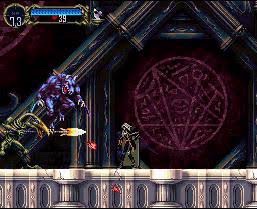
That game is Castlevania: Symphony of the Night, a now-legendary release that took the series in a whole new direction. It’s a little bit Castlevania 2, a little bit Dracula X, a whole lot Metroid, all wrapped up and seasoned with time-honored RPG staples like leveling up and making use of various pieces of gear to modify your stats. While most considered this a pretty straight-forward example of an action-RPG at the time of its release, fans soon coined a new term, ‘Metroidvania’, for the games that were largely known as side-scrolling adventure or RPG games in prior years. It would be some time before that term would show up, however, and even longer before it gained popular acceptance. When it did, it effectively peeled away one of the contenders for the action-RPG genre label. I’ve even seen Xanadu referred to as a proto-Metroidvania by some.
The other two notable console action-RPGs came near the end of the year. Both come from beloved developers with cult followings, but one was on its way out of the business while the other was just beginning its ascent. Granstream Saga was for all intents and purposes the last game in the series that began with Soul Blazer, and the final time that a Quintet game would release outside of Japan. Being a fully-3D RPG on somewhat limited hardware, it doesn’t look great, but it’s certainly an under-appreciated entry in the genre. A few weeks later, Atlus’s Princess Crown released on the SEGA Saturn. Designed and directed by George Kamitani, Princess Crown is a side-scrolling action-RPG with gorgeous 2D art. Many of the team members behind this game would soon leave Atlus to form Vanillaware, where they’ve been making somewhat similar games ever since.
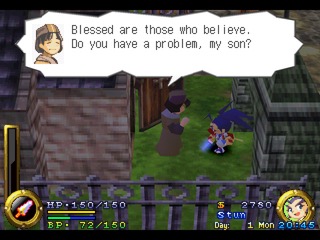 The following year was one of the best in gaming history, but for the action-RPG genre it was a lot of mixed results. Square’s Brave Fencer Musashi was an excellent game with a great sense of humor. It sold very well, but how much of that was the game itself versus the fact that it was packed in with a playable demo for Final Fantasy 8 is an exercise best left to the accountants. Namco and Enix delivered new installments in their Tales and Star Ocean series. Like the previous games, these are for the most part traditional JRPGs but with action-based battle systems. Over on home computers, there wasn’t a whole lot of good news. A few decent Diablo clones showed up: Hexplore, Dink Smallwood (stop giggling), and Ancient Evil. Diablo itself received a port to the Sony PlayStation where it enjoyed considerably greater success than most PC ports of the period.
The following year was one of the best in gaming history, but for the action-RPG genre it was a lot of mixed results. Square’s Brave Fencer Musashi was an excellent game with a great sense of humor. It sold very well, but how much of that was the game itself versus the fact that it was packed in with a playable demo for Final Fantasy 8 is an exercise best left to the accountants. Namco and Enix delivered new installments in their Tales and Star Ocean series. Like the previous games, these are for the most part traditional JRPGs but with action-based battle systems. Over on home computers, there wasn’t a whole lot of good news. A few decent Diablo clones showed up: Hexplore, Dink Smallwood (stop giggling), and Ancient Evil. Diablo itself received a port to the Sony PlayStation where it enjoyed considerably greater success than most PC ports of the period.
Bethesda tried chasing the other craze at the time by blending their Elder Scrolls brand with some Tomb Raider flavoring to create Redguard. It’s probably more properly considered an action-adventure game than an action-RPG, though. Probably the most interesting release of 1998 in the genre was Interplay’s Descent to Undermountain. A Dungeons & Dragons-licensed 3D action-RPG using the robust Descent engine, worked developed by a team that included the likes of Chris Avellone and Steve Perrin? Where do I sign up? Unfortunately, the engine proved to be resistant to the task of supporting an RPG, the development cycle was rushed, and the final result was something that is only remembered for how buggy, disappointing, and downright terrible it turned out to be. Interplay’s output was wildly inconsistent at this point, and Descent to Undermountain may well have been their nadir.
 Another console cycle was winding down, and 1999’s console action-RPGs reflected the typical flavor of late-generation games. Square’s Mana series made its PlayStation debut and, in the following year, its return to North America with Legend of Mana, a quirky game that was ahead of its time in a lot of ways. Its lack of similarities to Secret of Mana make it controversial among fans of that game, however. Square also released Threads of Fate, a relatively light-hearted 3D action-RPG that featured two distinct characters and storylines that intertwined in various ways. Both games featured excellent production values and still have cult followings to this day.
Another console cycle was winding down, and 1999’s console action-RPGs reflected the typical flavor of late-generation games. Square’s Mana series made its PlayStation debut and, in the following year, its return to North America with Legend of Mana, a quirky game that was ahead of its time in a lot of ways. Its lack of similarities to Secret of Mana make it controversial among fans of that game, however. Square also released Threads of Fate, a relatively light-hearted 3D action-RPG that featured two distinct characters and storylines that intertwined in various ways. Both games featured excellent production values and still have cult followings to this day.
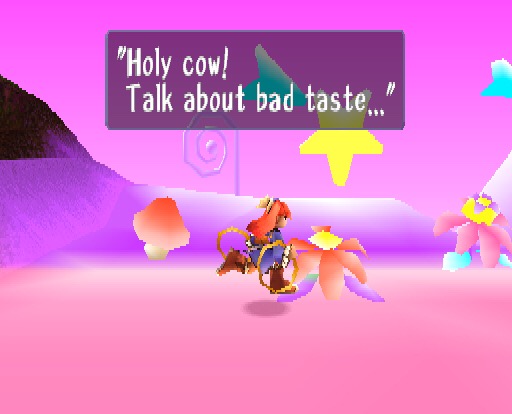 Meanwhile, more companies were starting to turn out their own spins on Diablo. Strategy First published a game called Clans, Eidos threw their hat in the ring with the fairly decent Revenant, and Delphine of Another World fame worked with various publishers to release Darkstone. While most Diablo fans were quite content to keep clicking away at that game, especially with the sequel on the horizon, enough of them were willing to try out similar games that the cottage industry of Diablo-likes would continue to grow. This was now the action-RPG formula of choice for PC players, leaving all of the other takes on the concept with the difficult task of selling themselves another way.
Meanwhile, more companies were starting to turn out their own spins on Diablo. Strategy First published a game called Clans, Eidos threw their hat in the ring with the fairly decent Revenant, and Delphine of Another World fame worked with various publishers to release Darkstone. While most Diablo fans were quite content to keep clicking away at that game, especially with the sequel on the horizon, enough of them were willing to try out similar games that the cottage industry of Diablo-likes would continue to grow. This was now the action-RPG formula of choice for PC players, leaving all of the other takes on the concept with the difficult task of selling themselves another way.
 Some, like Lands of Lore 3, seemed so stuck in the past as to feel like they were releases from a whole other era. The once-mighty Ultima franchise was brought to its knees with the terrible Ultima 9: Ascension, a botched attempt at a 3D action-RPG take on the franchise. Well, if nothing else, it made people more ready to forgive Ultima 8‘s quirks. But not all of the sequel news was bad. Looking Glass, Irrational Games, and Electronic Arts came together to produce System Shock 2. They loaded the game up with RPG elements to try to keep people from comparing it to Doom this time around. It’s probably not the first game you would think of when you hear action-RPG, but it’s frankly one of the better ones even if it is fairly unorthodox.
Some, like Lands of Lore 3, seemed so stuck in the past as to feel like they were releases from a whole other era. The once-mighty Ultima franchise was brought to its knees with the terrible Ultima 9: Ascension, a botched attempt at a 3D action-RPG take on the franchise. Well, if nothing else, it made people more ready to forgive Ultima 8‘s quirks. But not all of the sequel news was bad. Looking Glass, Irrational Games, and Electronic Arts came together to produce System Shock 2. They loaded the game up with RPG elements to try to keep people from comparing it to Doom this time around. It’s probably not the first game you would think of when you hear action-RPG, but it’s frankly one of the better ones even if it is fairly unorthodox.
 Sequels are well and good, of course, but the action-RPG did see one really great original entry in 1999 as well. Silver, developed by Spiral House and published by Infogrames, felt like a mash-up of Western game design and inspiration from Japanese pop culture. Unfortunately, the game flew under the radar in both its original PC and Dreamcast forms. Esteem for the game has increased significantly over time, and it’s now seen as one of the unsung classics of its era. Silver was recently made available again through GOG and is well-worth trying out if you missed out on it back in the day.
Sequels are well and good, of course, but the action-RPG did see one really great original entry in 1999 as well. Silver, developed by Spiral House and published by Infogrames, felt like a mash-up of Western game design and inspiration from Japanese pop culture. Unfortunately, the game flew under the radar in both its original PC and Dreamcast forms. Esteem for the game has increased significantly over time, and it’s now seen as one of the unsung classics of its era. Silver was recently made available again through GOG and is well-worth trying out if you missed out on it back in the day.
As the end of the decade, century, and millennium approached, the action-RPG genre was finally starting to get a little organized. While there were still plenty of exceptions, the genre was more or less down to only a few basic templates as far as the general perception went: third-person action-adventures in the vein of Silver and Brave Fencer Musashi, click-and-slash dungeon crawlers like Diablo, and first-person games like System Shock 2. The following decade would sadly see the tea spilled all over the place yet again in terms of defining the genre. For a few quiet years, however, people actually knew what you were talking about when you invoked the genre’s name. We’ll look at the unfolding chaos in our next installment of the Glossary.
You don’t have to wait too long, either. We’ll be picking this series up next week with a look at action-RPGs in the 2000s. A gentle reminder that the RPG Reload Play-Along of Chrono Trigger is going on for the whole month of August. It’s not too late to join, so stop by the thread in the forums and say hello. As for me, I’ll be back next week with another jump through time. Thanks for reading!
Next Week’s Reload: Action-RPGs in the 2000s
